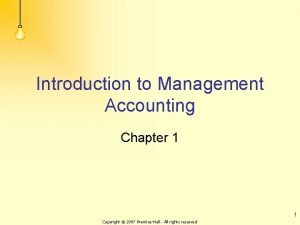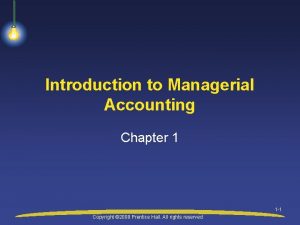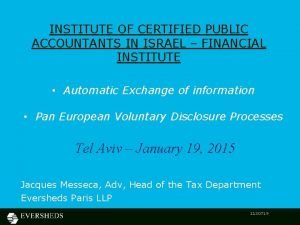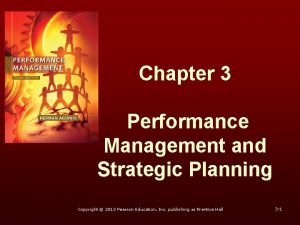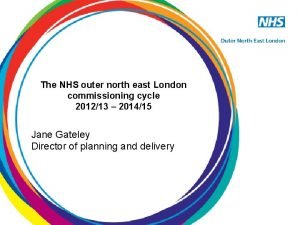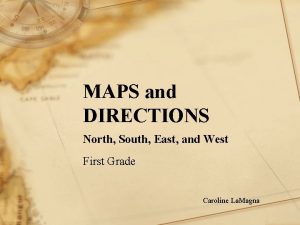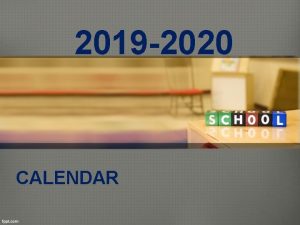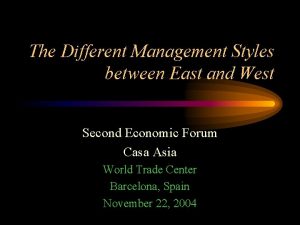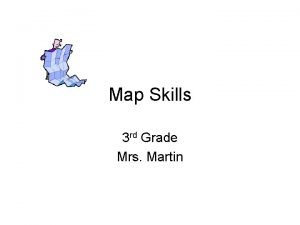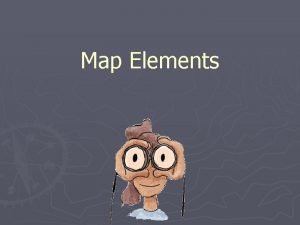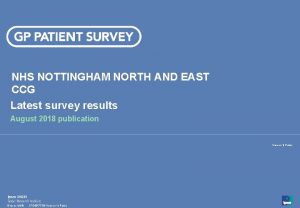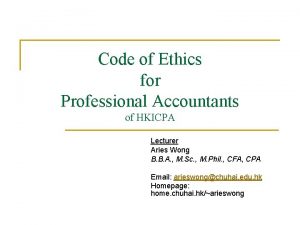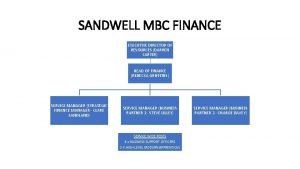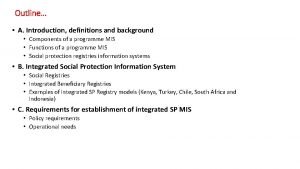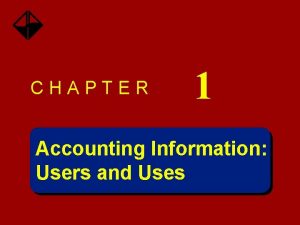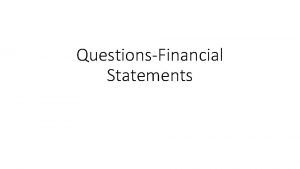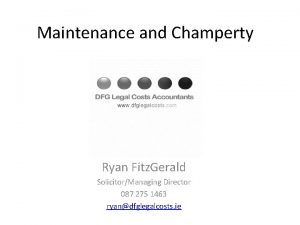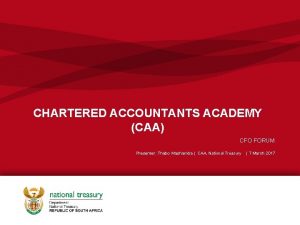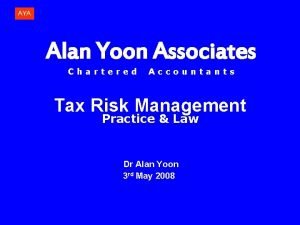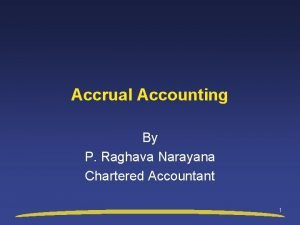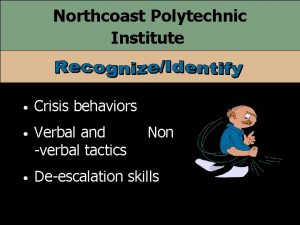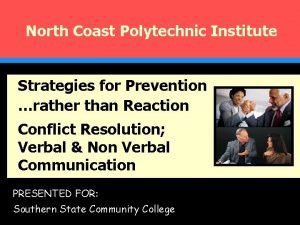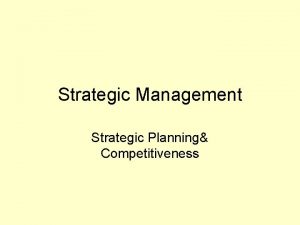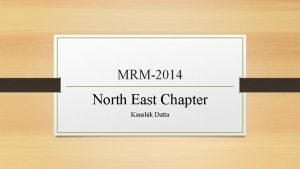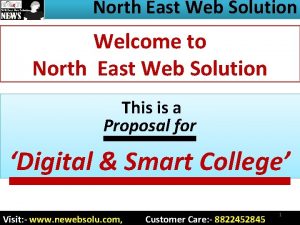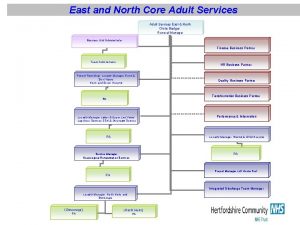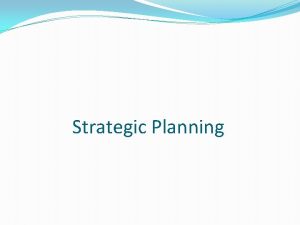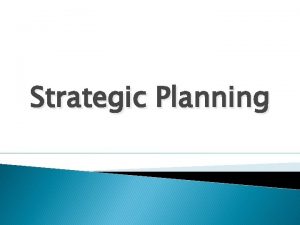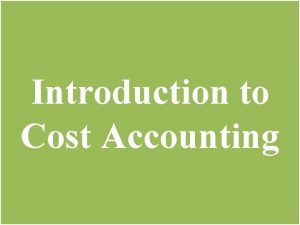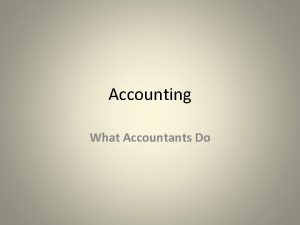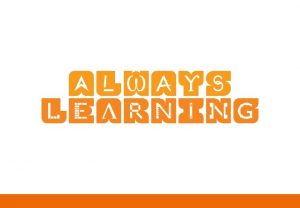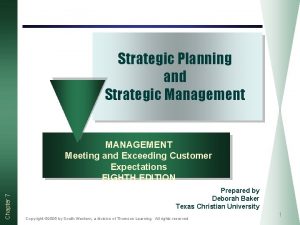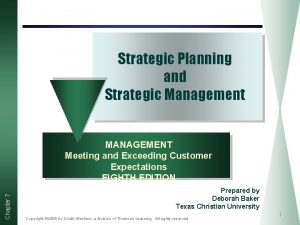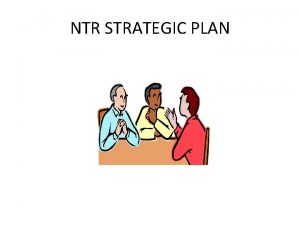STRATEGIC PLANNING Institute of Management Accountants North East






















































- Slides: 54

STRATEGIC PLANNING Institute of Management Accountants North. East Regional Council 10 th Annual Fall Conference Thomas A. Barron, Jr. , Ed. D. Director, M. S. in Organizational Effectiveness & Leadership Charter Oak State College

Agenda Ø The Nature of Strategic Planning Ø Value Proposition & Business Model Ø Strategic Analysis Models Ø Strategic Formulation Models Ø Strategic Plan Ø Conclusion

The Nature of Strategic Planning

The Strategic-Management Model Where are we now? Where do we want to go? How are we going to get there? Copyright © 2013 Pearson Education, Inc. publishing as Prentice Hall

Strategic Decisions Ø Long-term in nature (> 1 year) Ø Rare: Unusual and have no precedent to follow Ø Consequential: Commit substantial resources & demand a great deal of commitment from people at all levels Ø Directive: Set precedents for lesser decisions & future actions throughout the organization

Pitfalls in Strategic Planning Ø Doing strategic planning only to satisfy accreditation or regulatory requirements Ø Failing to communicate the plan to employees Ø Failing to involve key employees in all phases of planning Ø Top managers not actively supporting the strategic- planning process Ø Failing to use plans as a standard for measuring performance Ø Thinking tactically instead of strategically Copyright © 2013 Pearson Education, Inc. publishing as Prentice Hall

Value Proposition & Business Model

Value Proposition Ø An innovation, service, or feature intended to make a company or product attractive to potential customers. Ø Focus: Ø What problem or need is not being addressed in the market? Ø What product or service can you provide that will add more value or better solve a problem than current offerings in the market?

Value Proposition Ø Competitive advantage Ø Anything that a firm does especially well compared to rival firms Ø Goal: Utilize a firm’s competitive advantage to create economic value for both the firm and its customer

Value Proposition

Value Proposition Value Map Customer Profile Ø Products & Services Ø List of products & services a value proposition is built around Ø Customer Jobs Ø Describe what customers are trying to get done in their work & in their lives (their own words) Ø Pains Ø Describe bad outcomes, risks & obstacles related to customer jobs Ø Gains Ø Describe the outcomes customers want to achieve or the concrete benefits they are seeking Ø Gain Creators Ø Describe how your products & services create customer gains Ø Pain Relievers Ø Describe how your products & services alleviate customer pain

Value Proposition Steps: Ø Step 1: Create the Customer Profile Ø Step 2: Create the Value Map Ø Step 3: Determine the Fit

Customer Profile: Identify Jobs The types of things your customers are trying to get done in their work or personal lives Ø Functional Jobs- Customers attempt to complete a specific task or solve a specific problem Social Jobs- How customer wants to be perceived by others Ø Personal / Emotional Jobs- Customer seeks a specific emotional state Ø

Customer Profile: Types of Pains Undesired Outcomes, Problems, & Characteristics Ø Ø Functional- Doesn’t work well Social- I look bad doing this Emotional- Feel bad doing this Ancillary- Annoying, inconvenient Risks Ø Undesired potential outcomes Ø Important negative consequences Obstacles Ø Prevent a customer from starting a job or that slow them down Ø Cost, time, resources

Customer Profile: Types of Gains Describe the outcomes / benefits your customer wants Ø Required Gains Ø Solution will not work unless these gains are achieved Ø Expected Gains Ø Basic gains that we expect from a solution, even if it could work without them Ø Desired Gains Ø Gains that go beyond what we expect from a solution but would love to have if we could (customer can identify) Ø Unexpected Gains Ø Gains that go beyond customer expectations (customer does not identify).

Customer Profile Prioritization Prioritize Jobs, Pains, & Gains Jobs Pains Gains Important Extreme Essential Insignificant Moderate Nice to Have

Customer Profile- Management Tips Ø One Value Proposition Canvas for each different customer segment Ø Do not mix jobs & outcomes Ø Focus on all three job types (Functional, Social, & Emotional) Ø Focus on the customer & facts, dig deep, really understand what is going on with your customer Ø Brainstorming is key Ø Be specific

Value Map Steps: Ø Step 1: List Products & Services Ø Step 2: Identify Pain Relievers Ø Step 3: Identify Gain Creators Ø Step 4: Rank Products & Services, Pain Relievers, & Gain Creators

Value Map: Products & Services Ø List all the products and services that you offer Ø Helps customers complete jobs Ø Functional Ø Social Ø Emotional Ø Customer segment focus

Value Map: Pain Relievers Describe exactly how your products & services alleviate specific customer pains Ø Savings (time & money) Ø Make customers feel better; eliminate concerns Ø Fix underperforming solutions Ø Eliminate obstacles Ø Eliminate negative social consequences Ø Eliminate / minimize risks Ø Eliminate processing / customer errors Ø Eliminate barriers that keep customers from adopting your value proposition

Value Map: Gain Creators Describe exactly how your products & services will produce outcomes and benefits that your customer expects Ø Savings (time & money) Ø Outcomes that customers are specifically looking for or exceed expectations Ø Outperform current value propositions; makes adoption of value proposition easier Ø Make work / life easier; Create positive social consequences Ø Achieve customer dreams / aspirations

Value Map Prioritization Products & Services Pain Relievers Gain Creators Essential Nice to Have

Fit Achieved when customers get excited about your value proposition Ø Address important jobs Ø Alleviate extreme pain Ø Create essential gains Ø Based on what the customer cares about Ø Ongoing, continuous challenge for businesses

Great Value Proposition Characteristics Ø Embedded in great business models Ø Focus on jobs, pains, & gains that matter most to the customer Ø Focus on unsatisfied jobs, unresolved pains, & unrealized gains Ø Target few jobs, pains, & gains but do so extremely well Ø Address functional, social, & emotional jobs Ø Align with how customers measure success Ø Focus on jobs, pains, & gains that a lot of people have or will pay a lot of money for Ø Differentiate from competition on jobs, pains, & gains that customers care about Ø Outperform competition substantially on at least one dimension Ø Are difficult to copy

Competitive Advantage Core Competency Identification Ø Collection of competencies the corporation does exceedingly well Ø Provides access to a wide variety of markets Ø Make a significant contribution to the perceived customer benefits of the end product / service Ø Difficult for competitors to duplicate Ø 5 to 6 core competencies at most Core Competencies + Strong Value Proposition = Competitive Advantage

Business Model A business model describes a rationale of how an organization creates, delivers and captures value


Business Model Customer Segments: Value Proposition: Ø Require / justify a distinct Ø An innovation, service, or offer Ø Reached through different distribution channels Ø Require different types of relationships Ø Substantially different profit generation levels Ø Willingness to pay for different aspects of the offer feature intended to make a company or product attractive to potential customers.

Business Model Channels: Key Resources: Ø Awareness- How do we raise Ø Physical awareness of company’s products & services? Ø Evaluation- How do we help customers evaluate our Value Proposition? Ø Purchase- How do we allow our customers to purchase the products and services? Ø Delivery- How do we deliver a value proposition to our customers? Ø After Sales- How do we provide post-purchase customer support? Ø Intellectual Ø Human Capital Ø Financial

Business Model Customer Relationships: Ø Customer acquisition Ø Customer retention Ø Boosting sales (upselling) Key Activities: Most important things a company must do to make its business model work Ø Production Ø Problem solving Ø Platform / network

Business Model Revenue Streams: Cost Structures: Ø Revenues from one-time or Ø Cost-driven (Focus on recurring customer payments Ø Asset sales Ø Subscription fees Ø Renting / Leasing Ø Licensing Ø Brokerage Fees Ø Advertising Ø How do we price our product or service? ? ? minimizing costs) Ø Value-driven (Focus on value creation) Ø Cost Characteristics: Ø Fix Costs Ø Variable Costs Ø Economies of Scale (Unit Output) Ø Economies of Scope (Scope of Operations)

Business Model Key Partnerships Motivations: Ø Optimization and economies of scale Ø Reduction of risk and uncertainty Ø Acquisition of particular resources and activities Types of Partnerships: Ø Strategic alliances (noncompetitors) Ø Coopetition (strategic partnerships between competitors) Ø Joint ventures to develop a new business Ø Supply chain relationships to assure reliable supplies

Strategic Analysis Models

Strategic Analysis Management Tips # 1: Everything we do related to strategic management revolves around reacting to or acting in anticipation of external environmental conditions # 2: Assign measures / quantify everything

SWOT Analysis External Analysis: Opportunities & Threats Ø Economic Ø Social, Cultural, Demographic, & Environmental Ø Political, Legal, & Governmental Ø Competitors Ø Technological

Porter’s Five-Forces Model of Competition Copyright © 2013 Pearson Education, Inc. publishing as Prentice Hall

SWOT Analysis Internal Analysis: Strengths & Weaknesses Ø Management Ø Marketing Ø Finance/Accounting Ø Production/Operations Ø Research & Development Ø Management Information Systems Ø Human Resources

Internal Analysis Focus Ø Competency = Capability Ø Core Competency Ø Collection of competencies spread across the organization that the business does exceedingly well Ø Distinctive Competency Ø Core competencies that are superior to the competition

Value Chain Human Resource Management Recruiting, Training, Development Technology Development R&D, Process Improvement Procurement Purchasing of raw materials, machines, supplies Inbound logistics Operations Outbound logistics Marketing & Sales Primary Activities Service Profit Margin Support Activities Firm Infrastructure General Mgt. , Accounting, Finance, Strategic Planning

Strategy Formulation Models

SWOT Matrix- Four Types of Strategies SO Strategies WO Strategies Ø Use a firm’s internal strengths to take advantage of external opportunities Ø Aim at improving internal ST Strategies WT Strategies Ø Use a firm’s strengths to Ø Defensive tactics directed avoid or reduce the impact of external threats weaknesses by taking advantage of external opportunities at reducing internal weakness and avoiding external threats Copyright © 2013 Pearson Education, Inc. publishing as Prentice Hall

SWOT Matrix Example Copyright © 2013 Pearson Education, Inc. publishing as Prentice Hall

SWOT Matrix Example Copyright © 2013 Pearson Education, Inc. publishing as Prentice Hall

Strategic Plan

Mission Statement Ø “What is our business or our reason for being? ” Ø Broadly outlines the organization’s future direction. Ø Expresses values or expectations of stakeholders. Ø Short , concise, clear, & easy to remember. Ø Galvanize all employees to focused action

Mission Statement Ø Broad enough to allow for creative growth Ø Be limited enough to exclude non-congruent ventures Ø Serve as a framework for evaluating both current and prospective activities Ø Value proposition focused

Strategic Plan Objectives Strategies Tactical Plan

Strategic Plan Objectives: Ø Overarching goals identified as most important to the current and future health of the business Ø Limited in number Ø Abstract, serves as the framework for identifying and categorizing strategies Common Examples: Ø Achieve growth Ø Profit maximization Ø Efficiency Ø Leverage technology Ø Customer service

Strategic Plan Strategies: Ø High-level plan for purposes of achieving an organization’s business objective Ø Must use SMART criteria Ø Identifies Key Performance Measures Example Objective: Achieve Growth Ø In the next 3 years remodel and expand 15 existing stores Ø In the next 3 years build 5 new stores, at least 75, 000 sq. ft. in Massachusetts

Strategic Plan Tactical Plan: Ø Annual operating plan Example Objective: Achieve Growth Ø Based on identified Ø Remodel 2 stores in Objectives and Strategies Ø SMART criteria Ø Utilizes Key Performance Measures to evaluate level of success Ø Allocate required resources Sturbridge and Worcester Massachusetts remodel and expand 2 existing stores in Boston by December 31 Ø Build 1 new store in Hyannis, Massachusetts with 75, 000 sq. ft. by October 31

Strategic Plan Key Performance Measures / Key Performance Indicators Ø Organizations should identify key performance indicators that will drive organizational success that will assess achievement of objectives and strategies Ø If these measures are achieved the organization should achieve its plan Ø Limit the number of KPM / KPI of “total company-based” measures to be focused on by senior management (10 -12) Ø Financial as well as operational measures are required

Competitive Companies Characteristics Ø Market share matters, growth matters Ø Whether it’s broke or not, fix it & make it better Ø Innovate or evaporate Ø People (more specifically the talents and skills they contribute that provide a value-add to an organization) make a difference Ø Cost, quality, and speed of delivery are expected by customers Copyright © 2013 Pearson Education, Inc. publishing as Prentice Hall

Conclusion- Key Concepts Ø Understand remember precisely what business you are in- VALUE PROPOSITION !!! Ø Strategic environmental analysis is a critical aspect of the strategic planning process. A quality effort in this phase is a prerequisite for future strategic planning & implementation success. Ø People love to plan, but it is the “DO”, the achieving of results that matters. Everyone must be held accountable to the achievement of the plan.

References David, F. R. , & David, F. R. (2015). Strategic management: A competitive advantage (15 th ed. ). Upper Saddle River, NJ: Pearson. Osterwalder, A. , & Pigneur, Y. (2010). Business model generation. Hoboken, NJ: John Wiley & Sons Osterwalder, A. , Pigneur, Y. , Bernarda, G. , & Smith, A. (2014). Value proposition design. Hoboken, NJ: John Wiley & Sons
 Institute of cost and management accountants of pakistan
Institute of cost and management accountants of pakistan The institute of management accountants adopted the ______.
The institute of management accountants adopted the ______. Managerial accounting chapter 1
Managerial accounting chapter 1 Institute of certified public accountants in israel
Institute of certified public accountants in israel Fiji institute of accountants
Fiji institute of accountants Integrated care system north east
Integrated care system north east Strategic planning institute
Strategic planning institute Strategic planning vs tactical planning
Strategic planning vs tactical planning Io model strategic management
Io model strategic management Cultural aspects of strategy choice
Cultural aspects of strategy choice Horizontal movement of air is called
Horizontal movement of air is called Kalahari desert on africa map
Kalahari desert on africa map East is east and west is west
East is east and west is west Strategic planning for retail business
Strategic planning for retail business Performance management and strategic planning
Performance management and strategic planning Strategic planner
Strategic planner Outer north east london
Outer north east london North canada provinces
North canada provinces World map north south east west
World map north south east west Lines that run east and west but measure north and south
Lines that run east and west but measure north and south Fifty nifty states
Fifty nifty states Fifty united states
Fifty united states North east rural livelihood project
North east rural livelihood project North south east west leadership styles
North south east west leadership styles Wonthaggi north east psp
Wonthaggi north east psp Neisd 2020-21 calendar
Neisd 2020-21 calendar North east nhs
North east nhs North east south west
North east south west Nhs north east hampshire and farnham ccg
Nhs north east hampshire and farnham ccg Pest control bath and north east somerset
Pest control bath and north east somerset Education in north east india
Education in north east india North, south east west leadership styles
North, south east west leadership styles Map key
Map key World map with latitude and longitude pdf
World map with latitude and longitude pdf Nottingham north and east ccg
Nottingham north and east ccg Code of ethics for professional accountants
Code of ethics for professional accountants Hazlem fenton accountants
Hazlem fenton accountants Accountants professional indemnity insurance
Accountants professional indemnity insurance Strategic finance
Strategic finance Mdd forensic accountants
Mdd forensic accountants Iacpa
Iacpa New jersey association of public accountants
New jersey association of public accountants Primary users of accounting information are accountants
Primary users of accounting information are accountants Michigan association of certified public accountants
Michigan association of certified public accountants δwc
δwc Dfg legal costs accountants
Dfg legal costs accountants Playfun88
Playfun88 Chartered accountants academy
Chartered accountants academy Ayaalan
Ayaalan Accrue chartered accountants
Accrue chartered accountants South east strategic partnership for migration
South east strategic partnership for migration North coast polytechnic institute
North coast polytechnic institute North coast polytechnic
North coast polytechnic True north vs magnetic north
True north vs magnetic north North and south lesson 1 the industrial north
North and south lesson 1 the industrial north

